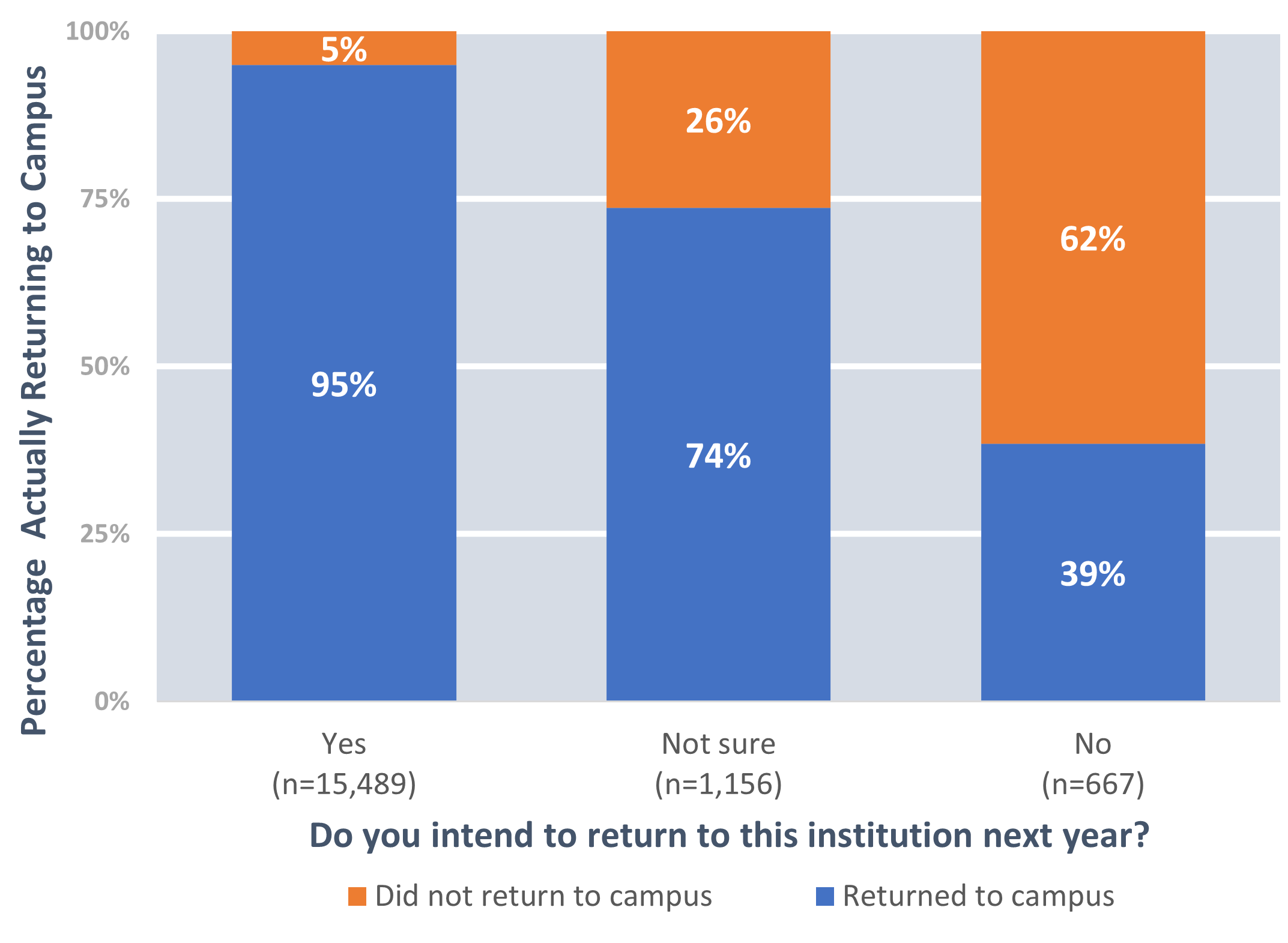How well do first-year student responses to NSSE's "intend to return" question match their actual persistence at the institution?
NSSE does not collect persistence rates as matter of course, but the questionnaire does ask first-year students if they intend to return to the institution the following year. However, with persistence data from the 2018 housing study, we were curious to know how well students' intentions to return matched their actual spring-to-fall persistence.
The data included over 17,000 students from 75 institutions who completed the "intention to return" question in Spring 2018, and for whom we obtained Fall 2018 enrollment information (Table 3). Nine in 10 first-year students in this specialized dataset returned to their campuses the following fall, and results show a strong relationship with their intentions as reported to NSSE. For example, fully 95% of those who intended to return actually did so, while nearly two thirds of those who did not intend to return left the institution. Interestingly, students who were not sure whether they would return the following year were quite likely to return (74%).
These results give us confidence that--while not a perfect predictor--NSSE's intention-to-return question is an adequate proxy for actual persistence.
| Spring-to-Fall Persistence | ||||
| Returned to campus | Did not return to campus | Total | ||
| Do you intend to return to this institution next year? | Yes (n=15,489) | 95% | 5% | 100% |
| Not sure (n=1,156) | 74% | 26% | 100% | |
| No (n=667) | 39% | 62% | 100% | |
| Total (N=17,312) | 91% | 9% | 100% | |
Note: These results were first reported in NSSE's Engagement Insights: Survey Findings on the Quality of Undergraduate Education--Annual Results 2019, pp. 10-11.


